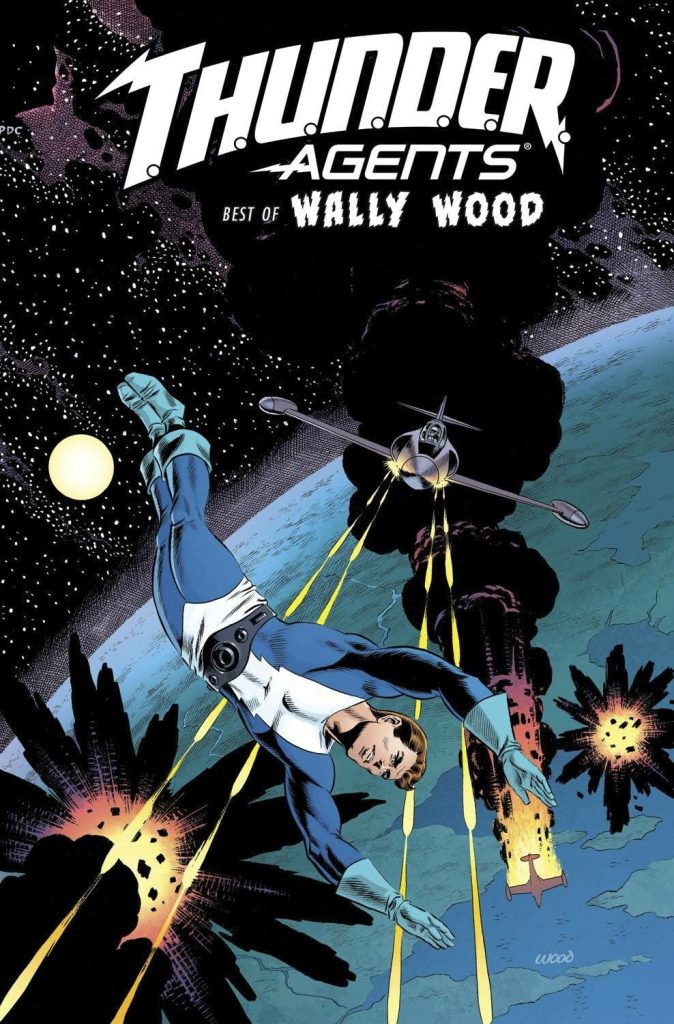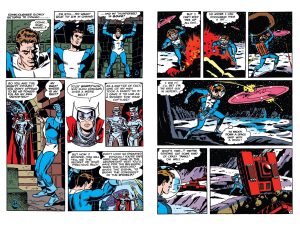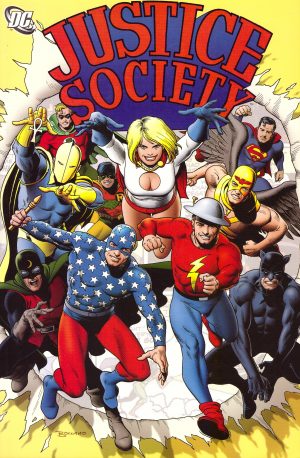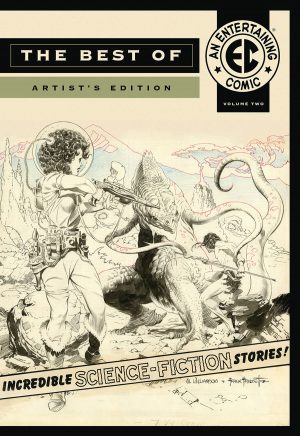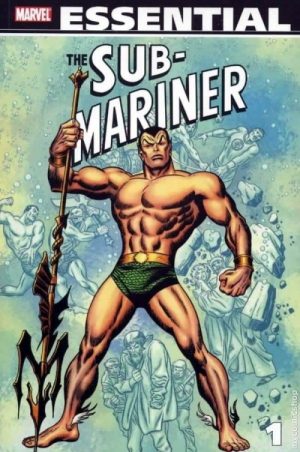Review by Ian Keogh
In 1965 Wally Wood was the guiding creative force behind the launch of T.H.U.N.D.E.R. Agents, a series that combined the then current fad for spy drama with superheroes. Wood created and designed most of the cast, and wrote a fair portion of the plots, although as credits weren’t a strongpoint back in the day, it’s hit and miss identifying which stories he wrote.
There’s no problem identifying his art. Although some other good artists, and eventually plenty who were nowhere near as good, worked on T.H.U.N.D.E.R. Agents, Wood’s pages stand out, and when he shone, the series sparkled.
As that wasn’t always the case, it’s worth taking a look at this selection before investing in six volumes of T.H.U.N.D.E.R. Agents Classics in paperback, or the hardcover T.H.U.N.D.E.R. Agents Archives. It’s also telling that all but two of the thirteen stories featured here are from the first year of publication.
Most of Wood’s pencilled stories featured Dynamo, the team’s Superman equivalent, amusingly named after early T.H.U.N.D.E.R. Agents writer Len Brown. He may be invulnerable with super strength, but that’s only when wearing his specially devised belt, and then only for a thirty minute period. Because of the strain it subjects him to, a safety mechanism automatically cuts the power after the half hour’s use, leading to several tense moments. Wood designed the people with flaws as well as the powers, and as a prime physical specimen Brown is attractive to women, but doesn’t really understand them at all, and the attraction between him and villain Iron Maiden is very nicely played. The sample art shows their first meeting.
Wood’s natural style is attractive, and as time passes his preference for using full or almost full figures in every panel becomes ever more unusual as greater numbers of superhero artists prefer to tell their stories as close-up as possible. It obviously saves time, but Wood put the effort in, which is why he’s still remembered over forty years after his death. That he’s a master storyteller can be seen from almost any page, so much so that in the 1980s Marvel editor Larry Hama used his techniques to put together a sample sheet for artists titled 22 Panels That Always Work. So much of that is on display here.
In the early days of T.H.U.N.D.E.R. Agents Wood supplied the layouts for other artists and would also ink their work, so this collection also includes stories pencilled by Dan Adkins, who very much followed Wood’s style, and a young Ralph Reese. While Wood fixed a fair amount in the inking, Adkins’ technique just isn’t as good.
The stories were never intended as more than light entertainment, and the approach was always tongue in cheek. It means they now stand up better than might be expected. However the art is the star, and it’s why Wood’s name is on the cover.
